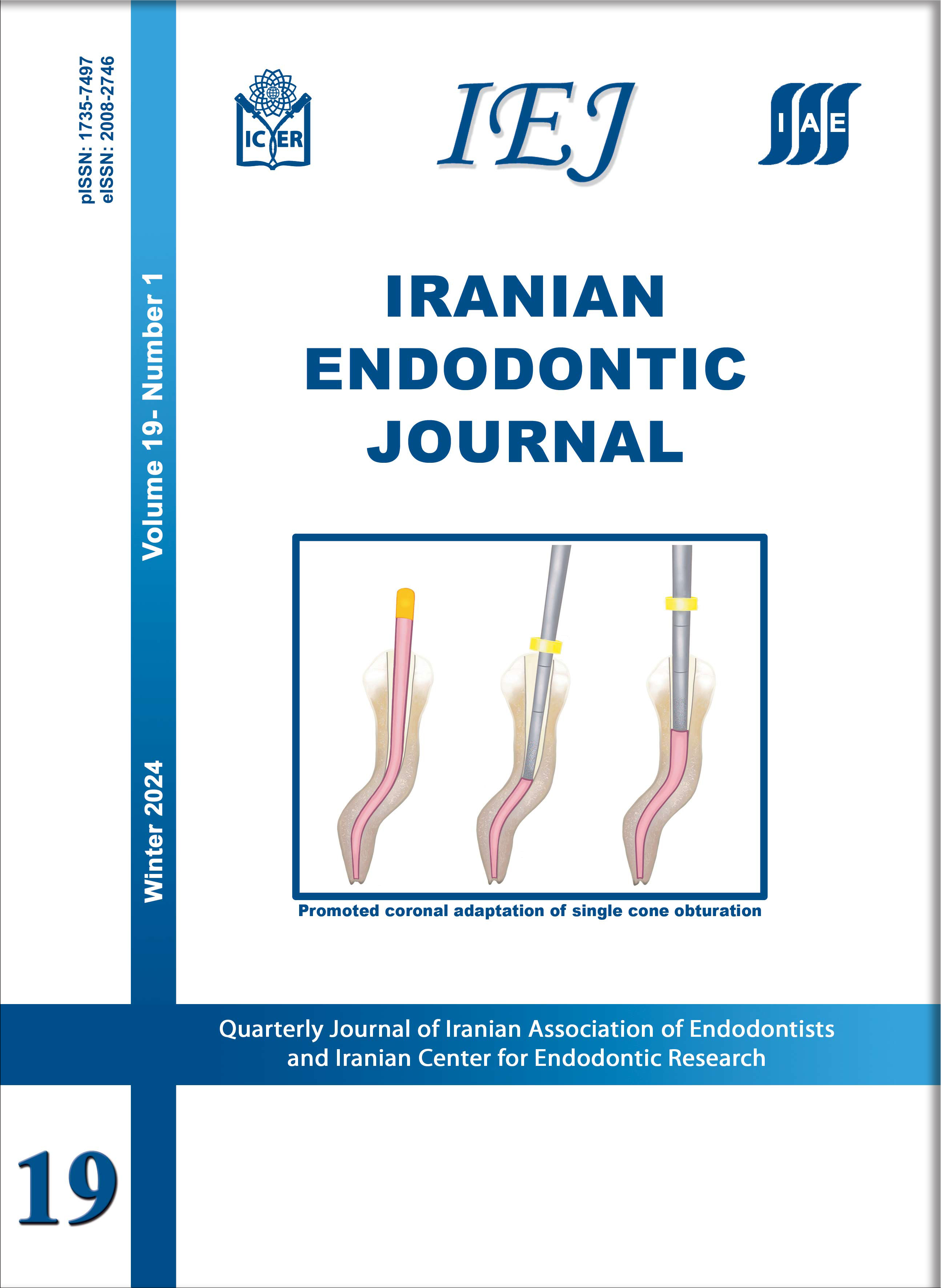Effect of Reciprocating and Rotary Systems on Postoperative Pain: A Systematic Review and Meta-Analysis
Iranian Endodontic Journal,
Vol. 16 No. 1 (2021),
1 January 2021,
Page 1-16
https://doi.org/10.22037/iej.v16i1.27944
Introduction: Our study aimed to compare the incidence and intensity of postoperative pain after endodontic instrumentation with reciprocating and rotary systems. Methods and Materials: An electronic literature search was performed with MEDLINE via PubMed, Scopus, and Web of Science databases from January 2008 to June 2020. Two high-impact endodontic journals were also hand searched. The selection criteria were: Population; patients requiring endodontic treatment, Intervention and Comparison; endodontic instrumentation with reciprocating versus rotary systems, and Outcome; postoperative pain. We extrapolated all included research data and reported them as dichotomized ordinal variables to evaluate the incidence of pain and continuous variables to assess pain intensity. Standardized mean difference (SMD) was calculated with Inverse Variance method for pain intensity; the incidence of postoperative pain was calculated using relative risk (RR) with the Mantel-Haenszel method. Random-effects model and 95% confidence interval (CI) were used for all meta-analyses. The I2 statistic was used to evaluate the statistical heterogeneity among studies (P<0.05). Results: Twenty-one articles were selected and 17 of them were included in the meta-analysis for the evaluation of postoperative pain in the first 24h. The meta-analysis was performed in two steps: a) all studies were included; b) subsequently studies with preoperative pain were excluded. A significant difference was observed in the intensity of postoperative pain; with rotary system having more favorable in both steps [a) SMD: 0.27; 95% CI: 0.13 to 0.41; P=0.0002; b) SMD: 0.37; 95% CI: 0.15 to 0.58; P=0.0010]. There was no significant difference in the incidence of pain, and the incidence of mild, moderate and severe pain . Conclusion: The meta-analysis results revealed that rotary system were the instrument of choice as they had lower intensity of postoperative pain. Further controlled studies are advocated to provide clarification for intensity/incidence of postoperative pain in endodontic treatment with mechanized instruments.




